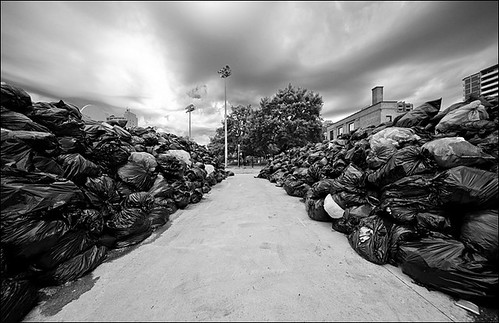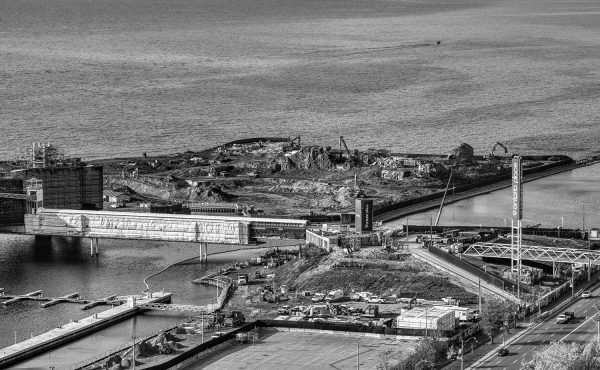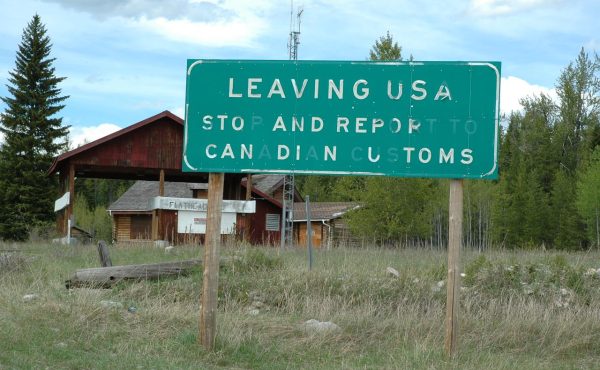
With the provincial Liberals unwilling to legislate back the municipal employees, and with David Miller promoting a new offer while refusing to ask for an arbitrator, is there anything that can short-circuit a strike now entering week four?
I’m not expecting CUPE 416 and 79 to leap gratefully or swiftly at the offer Miller went public with on Friday. Indeed, his gambit may well be met with further retrenchment on the part of resentful union bargaining teams.
Which means that all heads swivel in the direction of Toronto’s medical officer of health David McKeown and his public health department. He can theoretically shut it all down, but if or when McKeown drops that particular bomb, it won’t be for the reasons most people expect.
Everyone now knows the former provincial Minister of Health [acronym incorrectly expanded during editing process — ed.] Medical Officer of Health (MOH) Colin D’Cuhna coughed up the justification Ernie Eves needed to order CUPE back to work in 2002 — above the objection of Toronto MOH Sheela Basrur but just in time for the pope’s visit.
Much has changed in the public health universe since then, largely because of the SARS outbreak in 2003. Paul Martin established a national public health agency. Dalton McGuinty fired lapdog D’Cunha for botching that epidemic. And the province recently opened the doors of a new health protection and promotion shop.
D’Cuhna’s successor was Basrur, who died last year; Arlene King, the current provincial MOH, is an infectious disease veteran from the federal government. In short, the Liberals — having gone to some lengths to show they believe in sound policy — are unlikely to dial up a politically expedient public health order, even if Miller wanted one, which he doesn’t.
Early on, McKeown reminded some city councillors he wasn’t going to submit to political manipulation. With the stinky temporary dumps, he’s dispatched inspectors to ensure the city is taking the appropriate pest and rodent control measures, and he’s obtained several court orders to ensure that strikers don’t prevent crews from spraying. Basrur did much the same back in 2002.
Sure, the media is filled with stories of stench and rat sightings and sand box maggots freaking out parents. But these don’t add up to a major health hazard. Yet.
Indeed, Toronto Public Health is much more likely to reach for drastic measures if something large crops up that the TPH’s skeleton staff can’t handle.
No shortage of candidates — a sudden surge in H1N1 cases is the most obvious one. But shit happens. During last summer’s propane explosion in North York, public health staff hustled to help round up shelter for thousands of evacuated residents. Then there’s the steady drumbeat of infectious disease outbreaks related to food (cold cuts, ice cream — name your poison).
No one knows when the next one will occur. What’s certain is that some kind of crisis that demands the health department’s full deployment will come along sooner or later, and perhaps before a negotiated settlement. With 90% of TPH staff off the job, the resources just won’t be there.
In the event, will Queen’s Park dispatch its own public health troops?
Nope. That would mean asking provincial civil servants to cross a CUPE picket line.
Here it is, then: McKeown may be feeling confident about the dumps, but it’s the disaster behind door number two that’s keeping his hand poised over the breaker switch.
photo by Sam Javanrouh




4 comments
Colin D’Cuhna was not Minister of Health. He was the Ontario Chief Medical Officer of Health.
I think that ideally it’s better if the strike is resolved through negotiation rather than back-to-work legislation or even arbitration. Then everyone will have technically agreed to the final compromise. Otherwise, bitterness will linger on one side or the other and all these issues will come back in a few years. Living downtown, things don’t look half as bad as the media seems to be portraying it (granted, I don’t live next to a temporary dump) so I think we can hang on for another few weeks if that’s what it takes to settle this once and for all. Just my thoughts.
I heard about an interesting approach to labour issues recently called FOS; Final Offer Submission. The idea is that both sides submit their “most reasonable” offer to an arbitrator who then selects one or the other in its entirety — whichever one is “most fair”. This approach encourages both sides to be reasonable in their demands. It was tried in Manitoba in the late 80s — apparently wasn’t very popular — but sure seems a lot better than strikes and/or giving up agency altogether through arbitration. It was also used to settle the hotel workers strike in Niagara recently, although ironically one of the terms of the winning union offer was the elimination of FOS from future negotiations.
Removing the garbage and thus the health hazard from temporary dump sites does not require ending the strike, but instead a court order forbidding CUPE from obstructing (as opposed to delaying or otherwise protesting) the removal of accumulated garbage, as with the adjacent illegally dumped waste at Ingram this weekend, and a direction similar to that given to CUPE Windsor to reduce waits to 5 minutes.
http://www.reuters.com/article/pressRelease/idUS168136+09-Jun-2009+MW20090609
Indeed, removing garbage as the major media focus might mean them writing about the other critical functions currently idle such as daycare and building permits/inspections (disclosure – like many Torontonians looking to take advantage of the renovation tax credits, I am waiting for one myself)
In any case, I hope scenes like this are not in Toronto’s future:
http://www.youtube.com/watch?v=EAqMn4gEe00